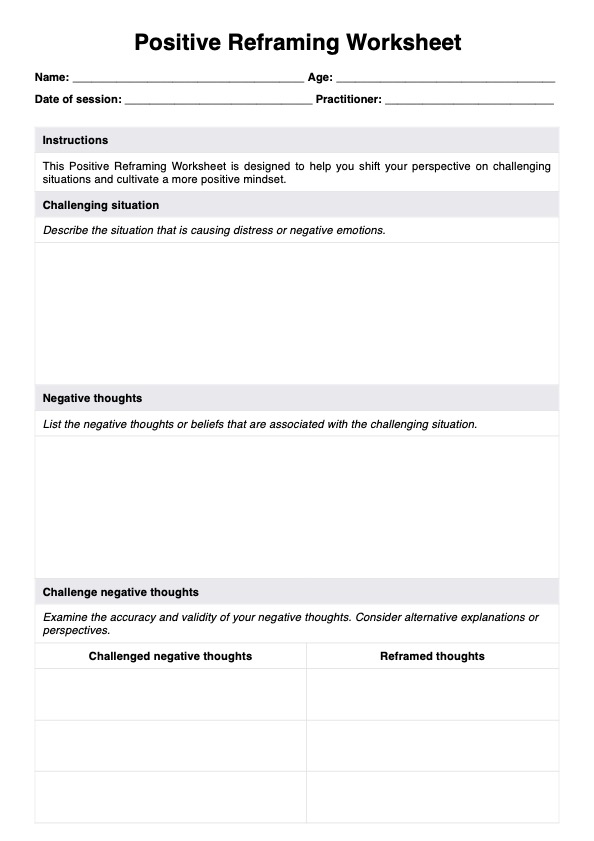Anyone can use the Positive Reframing Worksheet. It's a go-to guide for infusing positivity into an individual's mindset and boosting emotional well-being.

Positive Reframing Worksheet
Transform negativity within clients into resilience with our Positive Reframing Worksheet. Support the development of a more healthy and balanced perspective.
Positive Reframing Worksheet Template
Commonly asked questions
Use the Positive Reframing Worksheet when clients need help shifting their perspective on challenging situations or negative thoughts. It’s particularly effective in sessions focused on stress, problem-solving, or cognitive restructuring.
Completing a Positive Reframing Worksheet typically takes 10 to 20 minutes, depending on the client’s depth of reflection. Some clients may need more time if the situation or emotions involved are complex.
EHR and practice management software
Get started for free
*No credit card required
Free
$0/usd
Unlimited clients
Telehealth
1GB of storage
Client portal text
Automated billing and online payments











